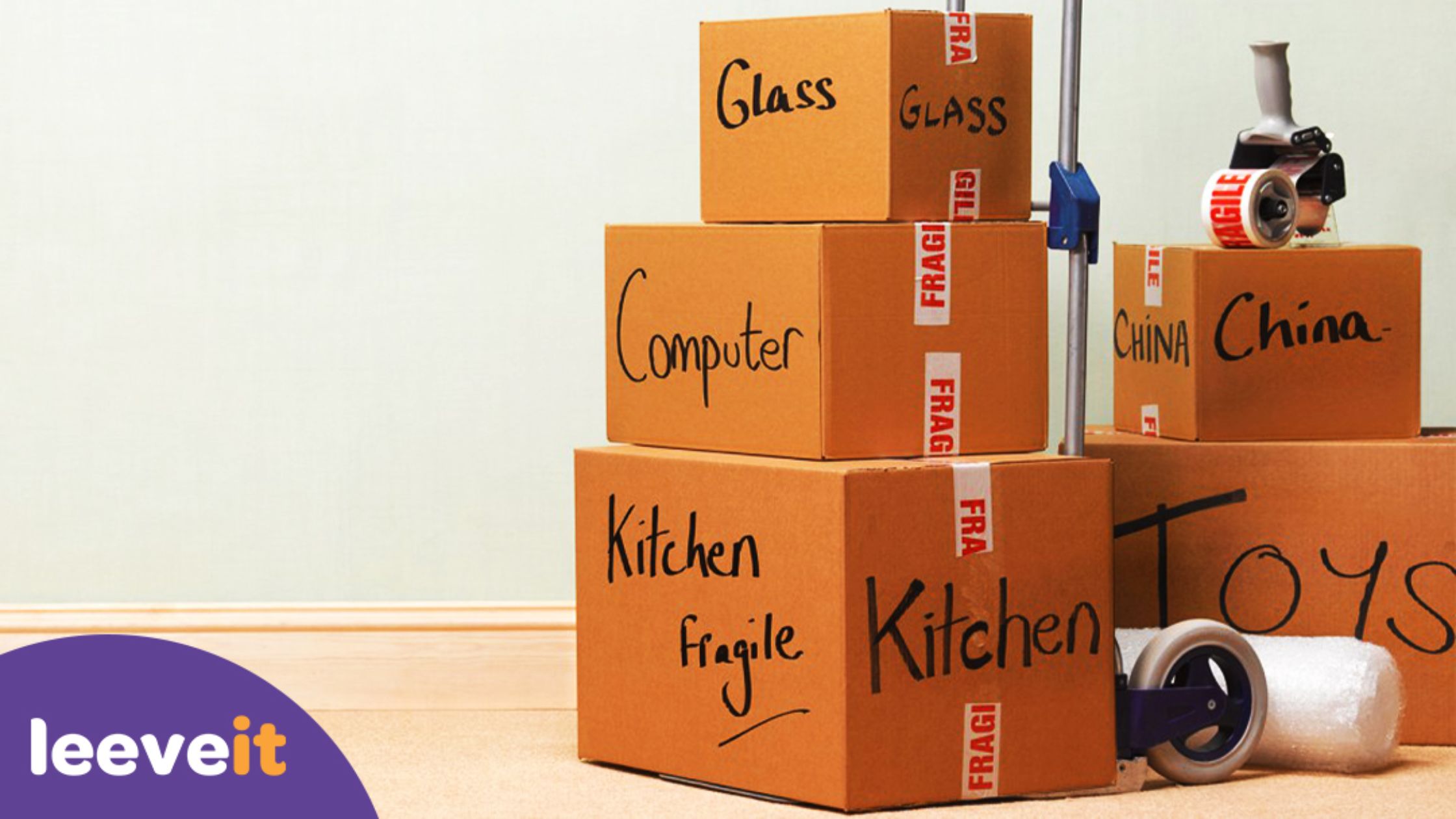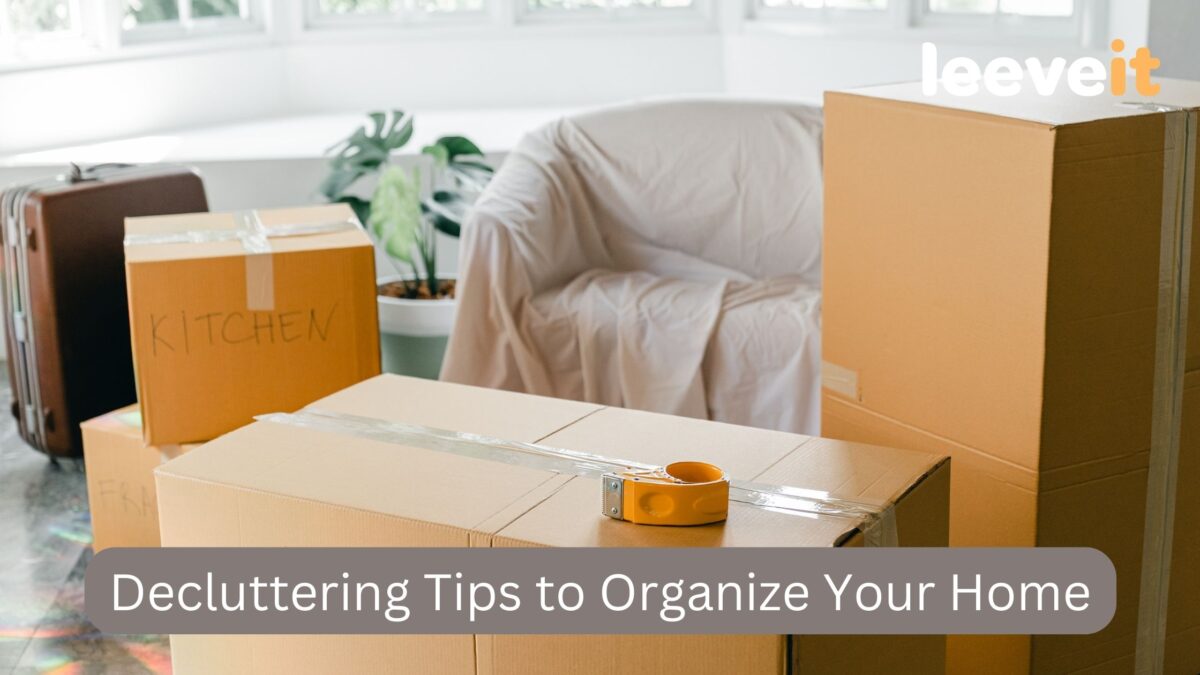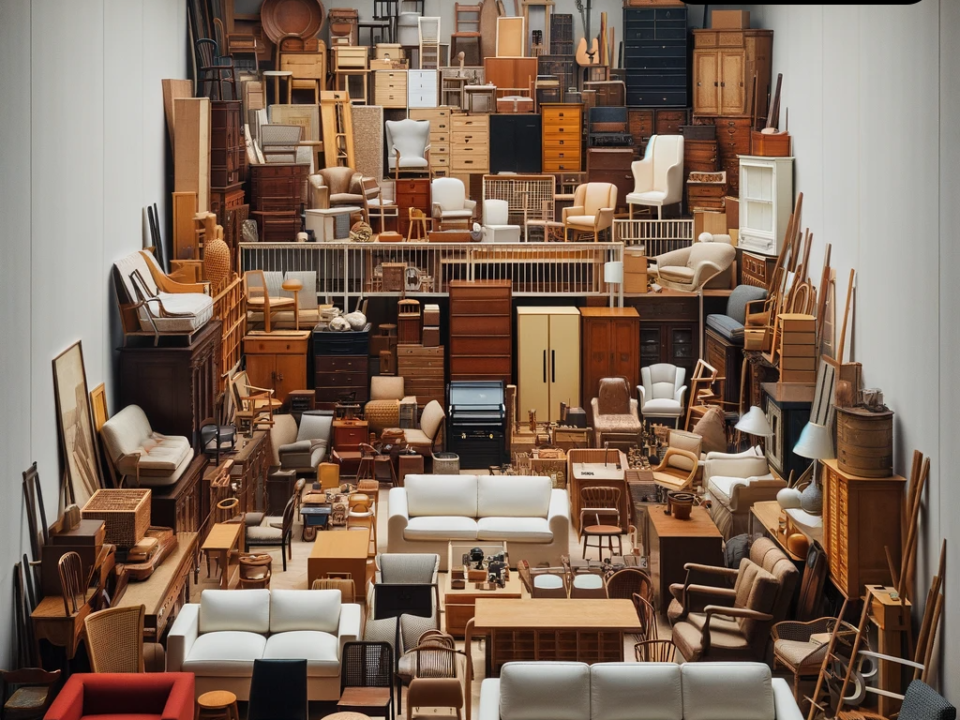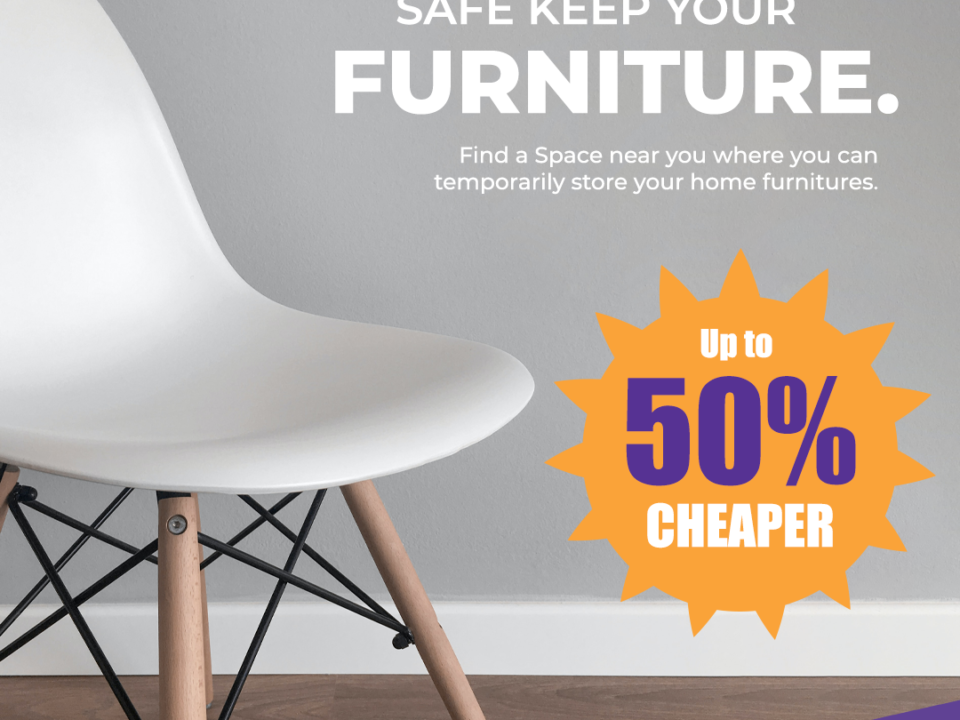Newsletter March-22 / EARN or SAVE on storage with leeveit!
April 4, 2022
What is Community Storage and Why is it Important?
May 4, 2022We all have that spot in our homes where we can’t seem to find anything. The junk drawer, the closet that doesn’t make sense, the basement that’s become a catchall, for everything we didn’t know where to put. When your home starts to feel more like a maze than a sanctuary, it’s time to tackle the clutter. But where to begin? Use our decluttering tips to organize your home!
First and foremost, what exactly is clutter?
Clutter is anything that prevents your living area from serving as a harmonious environment. It can take numerous forms, ranging from worthless garbage to physical obstacles. The root cause of all clutter is the same: a lack of awareness and attention. We collect items we don’t need, since we aren’t aware of the amount of space it takes up.
When does clutter become a problem?
Clutter is an issue when it interferes with our everyday lives and adds little to no value. It’s an issue when we don’t know where our belongings are. When we don’t have enough space for our things, we have a dilemma. However, unlike other issues, clutter is a matter of awareness and attention.
Why should you declutter your home?
Your house should be a safe haven from the worries of the outside world. However, many people’s homes are the total opposite of that. It’s a cluttered and disorganized environment, making it difficult to relax and find a calm spot. If your house is overly cluttered and messy, it can have a negative influence on your mental health and well-being.
Tips for Room-by-Room Organizing and Decluttering
Bedroom
The bed is usually the first thing that comes to mind when people think of their bedroom. But don’t forget about the surfaces around the bed, such as side tables, dressers, and other tables and surfaces. Taking a few minutes to empty these surfaces may have a tremendous impact. Not just in decreasing clutter in your bedroom, but also in making it seem lighter, brighter, and more welcoming. But don’t stop there—once you’ve emptied the surfaces, take a few moments to assess the objects you took away.
Now that you’ve made room in your drawers and tables, it’s time to sort, arrange, and store the stuff you’ve taken out. Using tiny baskets, bowls, and trays to carry your jewellery, glasses, and other important objects is one of the simplest methods to keep your room nice and tidy. Everything has a place and is out of sight this way, keeping your area clean and tidy.
Living Room
The living room is the heart of every home. It’s where you spend the majority of your time, and it’s the space that sets the tone for the rest of the house. Unfortunately, with time, it may become a storage room for everything from old furniture to children’s toys.
Remove everything that is damaged or does not belong in your living room.
This is a good way to start when it comes to organizing your living room. Remove everything you haven’t used in a long time, especially if it isn’t bringing you joy. This allows you to store the objects that are most important to you, while making your room more spacious and lighter.
Clear out old magazines and newspapers from your living space
Old copies can be kept in a magazine rack or drawer. You shouldn’t have outdated magazines and newspapers gathering dust and taking up room. It will also make room on your coffee table, bookcase, or other areas of your living room for you to display or keep something else.
Clear up the space behind your sofa cushions.
You’ll be surprised at how much you can declutter behind your sofas and in other hard-to-reach areas. If you’re lucky, you could even come upon some spare money hidden away.
Invest in furniture with Storage
Your living room most certainly does not have a lot of storage space. But it doesn’t mean you can’t add storage without drastically affecting the appearance of your space. One solution is to simply get furniture that also can be utilized for storage. For example, if you have an entertainment center with shelves and drawers, you may utilize it as storage space.
Organize the Wires
The best way to deal with cable clutter in your living room is to find ways to hide your cables. Pass them through holes in the wall or create small holes in your entertainment center to thread the wires through. Utilize cable sleeves, cable boxes, and cable raceways to arrange your cables. In this way, you manage visible cables, while concealing the wiring behind your television.
Home Office
Your home office is where you do your work. It’s where you’re most at ease, where you lock the door and concentrate without any disturbance. It’s your haven, your haven of productivity.
Remove anything that doesn’t belong in an office
Getting rid of any unnecessary items in your office might help you focus and decrease clutter. Begin by determining which objects are important and which may be left alone. Then, select which objects to take out of the workplace for the week or day. Shift objects from one location to another, to create place for what’s left, or empty a shelf or surface to make way for new items.
Make labels for storage spaces
Labeling your drawers, cabinets, and storage areas is a great way to get organized without investing a lot of time or money. It also helps you identify where things are, to avoid making piles on the floor or table.
Know when to get rid of important documents
Our file systems frequently grow disorganized over time. Even if you have everything well organized, those files might accumulate over time. The easiest method to keep your filing system in order, is to only pull-down files when you have a definite need to file them. This maintains your workstation appearing clear and tidy, while avoiding the creation of further clutter.
Kitchen
While your kitchen should be loaded with the required tools and gadgets to prepare wonderful meals, it may also be cluttered with stuff that isn’t necessary but takes up space. That is why it is critical to clear your kitchen and dispose of objects that you no longer need. This will not only improve the appearance and functionality of your kitchen, but it will also make cooking and other kitchen activities easier.
Test and Evaluate Appliances
When you’re ready to declutter your kitchen, the first step is to assess the area, to see which equipment should be kept and which to replace with more space-saving versions. This may be a challenge, which is why testing and evaluating your appliances is a smart idea. It will help you determine which models work best, which manufacturers provide the greatest warranties, and which models best suit your cooking and cleaning needs. Take measurements of your present area to figure out how much space your new appliances would require.
Free up cupboard space
Open your cupboards and drawers and remove everything that is outdated, obsolete, or not used frequently enough to keep. If there’s something in your kitchen that doesn’t serve a purpose right now, chances are it won’t in the future, so you can get rid of it with little inconvenience to your everyday life. The same is true for holders and containers; if you don’t use it, don’t keep it!
Understand Your Culinary Strengths
Do you keep items for what you make frequently, or for what you’d like to learn to cook someday? Most of us save stuff for the food we enjoy eating, but this can lead to clutter if you don’t carefully evaluate how you store your goods. For example, if you seldomly bake, don’t let cupcake pans accumulate in your cupboards!
Basement, Attic, or Garage
When it comes to cleaning out an attic, garage, or basement, it’s critical to do it in a manageable manner. After all, you don’t want to end up with a home improvement task that drains you and makes you worried. When you’d rather be spending time with family or catching up with friends, the last thing you want to do is give yourself extra work. Having a decent strategy will allow you to proceed at your own pace, while still enabling progress.
Don’t feel obligated to do it in a single day
Rushing through the process, will not optimize your end result, and attempting to do the full clear-out in one day is ridiculous. Take your time! If feasible, attempt to finish each area of a room in a single day. When you’re ready to move on to the next portion of the space, create a new objective for yourself and develop a new plan of attack.
Clear Things Away to See What’s There
Begin with a corner or an area that you aren’t overly attached to and work your way out. As you go through each section, make a list of what you find and make an inventory of everything you find. In that manner, it’s easy to see what’s in the space and where items are. In the basement, for example, you may create an inventory of the tools you have.
Toss out what you don’t need
Discard broken objects, but also get rid of anything that you don’t need to keep. Things that don’t fit, you don’t use, or that other people might appreciate but just sit in storage, are examples of this. If the products are in good functioning form, sell or donate them to free up space and allow others to buy or receive them.
Sort the items with care and place them in appropriate locations
It is easier to have a good system for your stored objects, by categorizing items according to usage and identifying any storage locations. It’s also easier to find items later on, when you need them.
Place loose items in clear boxes
There are multiple reasons to use transparent storage containers for tiny, loose materials. They assist you to find what you’re looking for from a distance and arrange your little items. It’s simple to see what you have and easy to find when you need it. They are resistant to breakage and are often affordable.
Keep Your Home Clutter-Free for Good
Don’t allow potential clutter into your home in the first place.
You may avoid clutter in the first place by keeping your house clean and avoid purchasing goods that will simply add to your clutter. Clutter may creep up on you while you’re not looking, so keep a tight check on what goes in and what comes out of your home. As you go through your stuff and get rid of anything you don’t need, keep an eye out for possible clutter.
Do a Regular Decluttering Sweep
Dealing with clutter on a daily basis is a reality for most families, and it is frequently a source of frustration. However, if you take a few minutes at the start of each day to lay away clutter such as old mail, toys, and clothes, you can avoid further piles from forming. This will offer you more time to focus on the work at hand, allowing you to get more done in a day and enjoy the advantages of a clutter-free house and mind.
Get a Self Storage Unit
The next step after decluttering your home is to find yourself some extra space. This will allow you to store the things you no longer want in a secure location, while you decide what you want to do with the items. This can be a great way to store furniture you don’t have room for or to store decorative items you don’t want to get rid of. You can also use a self-storage unit to store items that are no longer functional or that you no longer have room for in your home, but don’t want to get rid of.

In need of a self-storage unit nearby to store your belongings? Contact us today and we will be glad to assist you!





